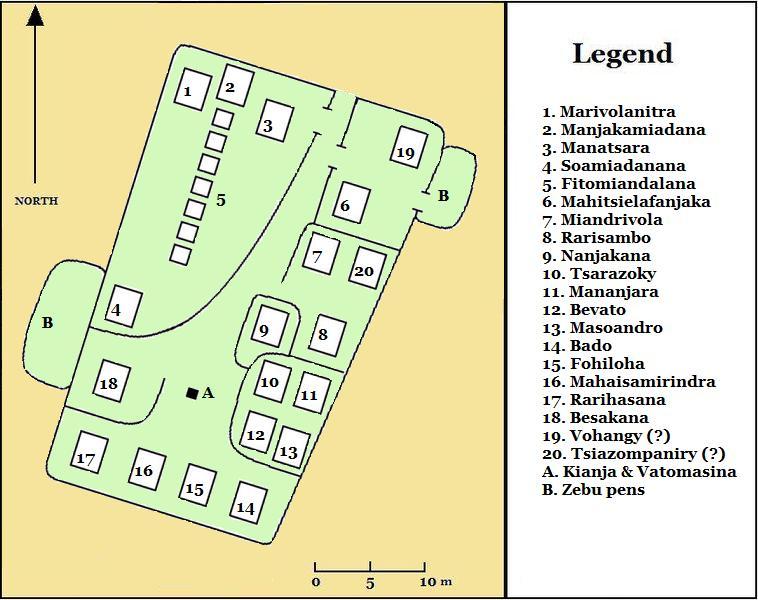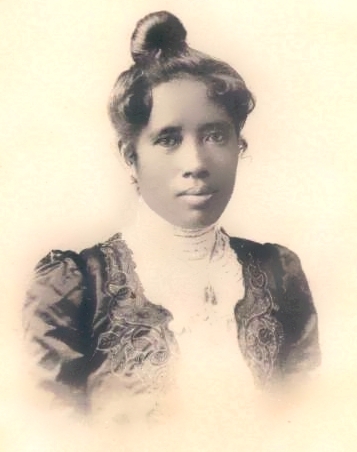|
Besakana
The Rova of Antananarivo ( mg, Rovan'i Manjakamiadana ) is a royal palace complex ('' rova'') in Madagascar that served as the home of the sovereigns of the Kingdom of Imerina in the 17th and 18th centuries, as well as of the rulers of the Kingdom of Madagascar in the 19th century. Its counterpart is the nearby fortified village of Ambohimanga, which served as the spiritual seat of the kingdom in contrast to the political significance of the Rova in the capital. Located in the central highland city of Antananarivo, the Rova occupies the highest point on Analamanga, formerly the highest of Antananarivo's many hills. Merina king Andrianjaka, who ruled Imerina from around 1610 until 1630, is believed to have captured Analamanga from a Vazimba king around 1610 or 1625 and erected the site's first fortified royal structure. Successive Merina kings continued to rule from the site until the fall of the monarchy in 1896, frequently restoring, modifying or adding royal structures within ... [...More Info...] [...Related Items...] OR: [Wikipedia] [Google] [Baidu] |
Andrianjaka
Andrianjaka reigned over the Kingdom of Imerina in the central highlands region of Madagascar from around 1612 to 1630. Despite being the younger of King Ralambo's two sons, Andrianjaka succeeded to the throne on the basis of his strength of character and skill as a military tactician. The most celebrated accomplishment of his reign was the capture of the hill of Analamanga from a Vazimba king. There he established the fortified compound (''rova'') that would form the heart of his new capital city of Antananarivo. Upon his orders, the first structures within this fortified compound (known as the Rova of Antananarivo) were constructed: several traditional royal houses were built, and plans for a series of royal tombs were designed. These buildings took on an enduring political and spiritual significance, ensuring their preservation until being destroyed by fire in 1995. Andrianjaka obtained a sizable cache of firearms and gunpowder, materials that helped to establish and preserv ... [...More Info...] [...Related Items...] OR: [Wikipedia] [Google] [Baidu] |
Merina Kingdom
The Merina Kingdom, or Kingdom of Madagascar, officially the Kingdom of Imerina (–1897), was a pre-colonial state off the coast of Southeast Africa that, by the 19th century, dominated most of what is now Madagascar. It spread outward from Imerina, the Central Highlands region primarily inhabited by the Merina ethnic group with a spiritual capital at Ambohimanga and a political capital west at Antananarivo, currently the seat of government for the modern state of Madagascar. The Merina kings and queens who ruled over greater Madagascar in the 19th century were the descendants of a long line of hereditary Merina royalty originating with Andriamanelo, who is traditionally credited with founding Imerina in 1540. In 1883, France invaded the Merina Kingdom to establish a protectorate. France invaded again in 1894 and conquered the kingdom, making it a French colony, in what became known as the Franco-Hova Wars. History Hova-Vazimba conflict Madagascar's central highlands ... [...More Info...] [...Related Items...] OR: [Wikipedia] [Google] [Baidu] |
Kingdom Of Imerina
The Merina Kingdom, or Kingdom of Madagascar, officially the Kingdom of Imerina (–1897), was a pre-colonial state off the coast of Southeast Africa that, by the 19th century, dominated most of what is now Madagascar. It spread outward from Imerina, the Central Highlands region primarily inhabited by the Merina ethnic group with a spiritual capital at Ambohimanga and a political capital west at Antananarivo, currently the seat of government for the modern state of Madagascar. The Merina kings and queens who ruled over greater Madagascar in the 19th century were the descendants of a long line of hereditary Merina royalty originating with Andriamanelo, who is traditionally credited with founding Imerina in 1540. In 1883, France invaded the Merina Kingdom to establish a protectorate. France invaded again in 1894 and conquered the kingdom, making it a French colony, in what became known as the Franco-Hova Wars. History Hova-Vazimba conflict Madagascar's central highlands ... [...More Info...] [...Related Items...] OR: [Wikipedia] [Google] [Baidu] |
Kingdom Of Madagascar
The Merina Kingdom, or Kingdom of Madagascar, officially the Kingdom of Imerina (–1897), was a pre-colonial state off the coast of Southeast Africa that, by the 19th century, dominated most of what is now Madagascar. It spread outward from Imerina, the Central Highlands region primarily inhabited by the Merina ethnic group with a spiritual capital at Ambohimanga and a political capital west at Antananarivo, currently the seat of government for the modern state of Madagascar. The Merina kings and queens who ruled over greater Madagascar in the 19th century were the descendants of a long line of hereditary Merina royalty originating with Andriamanelo, who is traditionally credited with founding Imerina in 1540. In 1883, France invaded the Merina Kingdom to establish a protectorate. France invaded again in 1894 and conquered the kingdom, making it a French colony, in what became known as the Franco-Hova Wars. History Hova-Vazimba conflict Madagascar's central highlan ... [...More Info...] [...Related Items...] OR: [Wikipedia] [Google] [Baidu] |
Architecture Of Madagascar
The architecture of Madagascar is unique in Africa, bearing strong resemblance to the construction norms and methods of Southern Borneo from which the earliest inhabitants of Madagascar are believed to have immigrated. Throughout Madagascar and the Kalimantan region of Borneo, most traditional houses follow a rectangular rather than round form, and feature a steeply sloped, peaked roof supported by a central pillar. Differences in the predominant traditional construction materials used serve as the basis for much of the diversity in Malagasy architecture. Locally available plant materials were the earliest materials used and remain the most common among traditional communities. In intermediary zones between the central highlands and humid coastal areas, hybrid variations have developed that use cob and sticks. Wood construction, once common across the island, declined as a growing human population destroyed greater swaths of virgin rainforest for slash and burn agriculture and ... [...More Info...] [...Related Items...] OR: [Wikipedia] [Google] [Baidu] |
Andrianampoinimerina
Andrianampoinimerina () (1745–1810) ruled the Kingdom of Imerina on Madagascar from 1787 until his death. His reign was marked by the reunification of Imerina following 77 years of civil war, and the subsequent expansion of his kingdom into neighboring territories, thereby initiating the unification of Madagascar under Merina rule. Andrianampoinimerina is a cultural hero and holds near mythic status among the Merina people, and is considered one of the greatest military and political leaders in the history of Madagascar. Andrianampoinimerina took power upon deposing his uncle, King Andrianjafy, who had ruled over Imerina Avaradrano (Northern Imerina). Prior to Andrianampoinimerina's reign, Imerina Avaradrano had been locked in conflict with the three other neighboring provinces of the former kingdom of Imerina that had last been unified under King Andriamasinavalona a century before. Andrianampoinimerina established his capital at the fortified town of Ambohimanga, a site of ... [...More Info...] [...Related Items...] OR: [Wikipedia] [Google] [Baidu] |
Ambohimanga
Ambohimanga is a hill and traditional fortified royal settlement ('' rova'') in Madagascar, located approximately northeast of the capital city of Antananarivo. It is situated in the commune of Ambohimanga Rova. The hill and the rova that stands on top are considered the most significant symbol of the cultural identity of the Merina people and the most important and best-preserved monument of the precolonial Merina Kingdom. The walled historic village includes residences and burial sites of several key monarchs. The site, one of the twelve sacred hills of Imerina, is associated with strong feelings of national identity and has maintained its spiritual and sacred character both in ritual practice and the popular imagination for at least four hundred years. It remains a place of worship to which pilgrims come from Madagascar and elsewhere. The site has been politically important since the early 18th century, when King Andriamasinavalona (1675–1710) divided the Kingdom of I ... [...More Info...] [...Related Items...] OR: [Wikipedia] [Google] [Baidu] |
Antananarivo, Madagascar
Antananarivo (French: ''Tananarive'', ), also known by its colonial shorthand form Tana, is the capital and largest city of Madagascar. The administrative area of the city, known as Antananarivo-Renivohitra ("Antananarivo-Mother Hill" or "Antananarivo-Capital"), is the capital of Analamanga region. The city sits at above sea level in the center of the island, the highest national capital by elevation among the island countries. It has been the country's largest population center since at least the 18th century. The presidency, National Assembly, Senate and Supreme Court are located there, as are 21 diplomatic missions and the headquarters of many national and international businesses and NGOs. It has more universities, nightclubs, art venues, and medical services than any city on the island. Several national and local sports teams, including the championship-winning national rugby team, the Makis are based here. Antananarivo was historically the capital of the Merina pe ... [...More Info...] [...Related Items...] OR: [Wikipedia] [Google] [Baidu] |
Antananarivo
Antananarivo (French language, French: ''Tananarive'', ), also known by its colonial shorthand form Tana, is the Capital city, capital and largest city of Madagascar. The administrative area of the city, known as Antananarivo-Renivohitra ("Antananarivo-Mother Hill" or "Antananarivo-Capital"), is the capital of Analamanga region. The city sits at above sea level in the center of the island, the List of capital cities by elevation, highest national capital by elevation among the Island country, island countries. It has been the country's largest population center since at least the 18th century. The President of Madagascar, presidency, National Assembly of Madagascar, National Assembly, Senate of Madagascar, Senate and Supreme Court are located there, as are List of diplomatic missions in Madagascar, 21 diplomatic missions and the headquarters of many national and international businesses and NGOs. It has more universities, nightclubs, art venues, and medical services than any c ... [...More Info...] [...Related Items...] OR: [Wikipedia] [Google] [Baidu] |
Veranda
A veranda or verandah is a roofed, open-air gallery or porch, attached to the outside of a building. A veranda is often partly enclosed by a railing and frequently extends across the front and sides of the structure. Although the form ''verandah'' is correct and very common, some authorities prefer the version without an "h" (the '' Concise Oxford English Dictionary'' gives the "h" version as a variant and '' The Guardian Style Guide'' says "veranda not verandah"). Australia's '' Macquarie Dictionary'' prefers ''verandah''. Architecture styles notable for verandas Australia The veranda has featured quite prominently in Australian vernacular architecture and first became widespread in colonial buildings during the 1850s. The Victorian Filigree architecture style is used by residential (particularly terraced houses in Australia and New Zealand) and commercial buildings (particularly hotels) across Australia and features decorative screens of wrought iron, cast iron "lac ... [...More Info...] [...Related Items...] OR: [Wikipedia] [Google] [Baidu] |
Merina People
The Merina people (also known as the Imerina, Antimerina, or Hova) are the largest ethnic group in Madagascar.Merina people Ethnic Groups of Madagascar Encyclopædia Britannica They are the "highlander" Malagasy ethnic group of the African island and one of the country's eighteen official ethnic groups. Their origins are mixed, predominantly with |
Andriamanelo
Andriamanelo ( ''fl.'' 1540–1575) was king of Alasora in the central highlands region of Madagascar. He is generally considered by historians to be the founder of the Kingdom of Imerina and originator of the Merina royal line that, by the 19th century, had extended its rule over virtually all of Madagascar. The son of a Vazimba mother and a man of the newly arrived Hova people originating in southeast Madagascar, Andriamanelo ultimately led a series of military campaigns against the Vazimba, beginning a several-decade process to drive them from the Highlands. The conflict that defined his reign also produced many lasting innovations, including the development of fortified villages in the highlands and the use of iron weapons. Oral tradition furthermore credits Andriamanelo with establishing a ruling class of nobles ('' andriana'') and defining the rules of succession. Numerous cultural traditions, including the ritual of circumcision, the wedding custom of ''vodiondry'' a ... [...More Info...] [...Related Items...] OR: [Wikipedia] [Google] [Baidu] |










